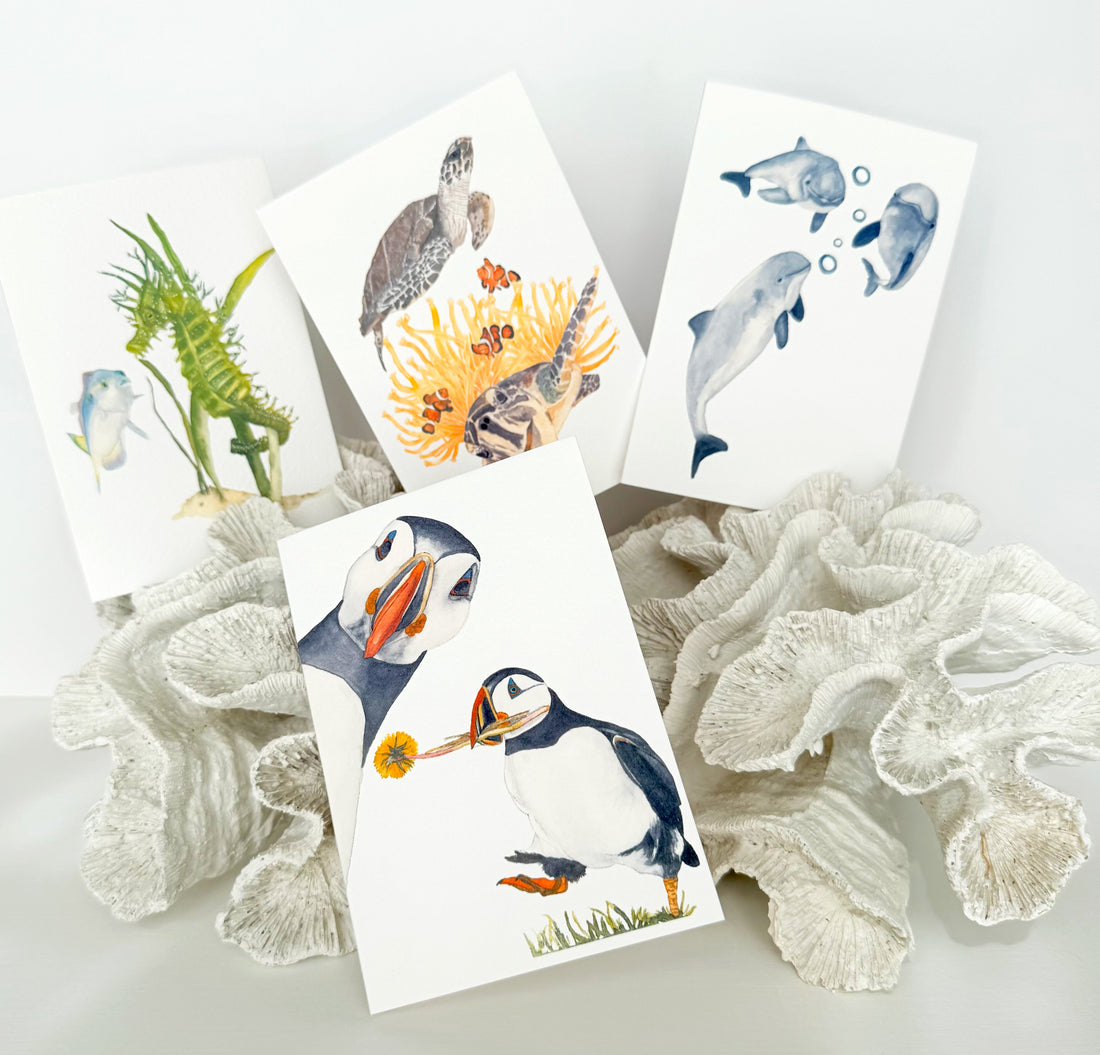
Creating Save the Seas Collection
Bozena AllisonShare
Every collection I create begins with a spark — an idea that refuses to let go until it finds its way onto paper. For Save the Seas, that spark came from an annual event organised by a long standing friend from the sustainability finance community which I am a part of myself - Sustainability Rocks.
Sustainability Rocks is not your typical finance gathering. Once a year, the sustainable finance community — the world I work in full-time — trades spreadsheets for guitars. Four bands battle it out on stage for the coveted trophy, while everyone dances, laughs, and celebrates a cause much bigger than ourselves. The proceeds from tickets, merchandise, and sponsorship all go to environmental and ecological charities chosen by the bands. The headline charity this year? The Marine Conservation Society UK (MCS).
That was the moment the idea took hold. If the energy and joy of one evening could raise awareness and funds for the oceans, then perhaps my cards could do the same.
Bringing the collection to life
Once I committed, I started by speaking with the team at MCS to understand the animals they are working so hard to protect. I knew I wanted to highlight species native to the UK — like puffins, spiny seahorses and porpoises — while also including creatures such as turtles that are critically endangered in other parts of the world.
From there came hours of research: habitats, behaviours, movement, and quirks. I wanted each watercolour to feel authentic while also capturing personality. The puffin, for example, ended up playfully photobombing, while the turtle peers out cheekily from the frame. These small touches of humour are what make the cards not just accurate, but full of life.
My process
I always begin with sketches, mapping out each animal in pencil before moving to watercolour. Watercolour has a fluidity that feels perfectly suited to the sea — its translucence mirrors water itself. I paint every animal and detail individually, piece by piece.
Once complete, I scan each painting and digitise it in my studio. This allows me to arrange and layer the original watercolours into a card layout while preserving the hand-painted character. Every card is printed here in the UK on responsibly sourced cardstock, and I ensure all packaging is recyclable or compostable. It’s a process that balances traditional craft with modern technique — and a lot of patience!
Why the Marine Conservation Society
Choosing to support MCS was instinctive. They are dedicated to protecting UK seas, shores, and wildlife, while also addressing global issues like plastic pollution and climate change. Their work is practical, science-driven, and rooted in action. For me, it was essential that the Save the Seas collection contribute directly to this mission. That’s why £1.50 from every card sold will be going straight to MCS.
More than a card
When I design a card, I always think about the moment someone opens it. The surprise, the smile, the keepsake quality. With Save the Seas, I wanted people to feel that their card is more than a message — it’s a piece of art and a small act of giving back.
Each card is designed to be a keepsake, something to pin to a board, frame on a desk, or treasure in a drawer. It’s about beauty, connection, and purpose combined.
The hope behind the collection
My hope is that these cards carry a ripple effect. That the puffin’s cheeky glance or the turtle’s curious stare might spark not just delight, but also awareness. That by sending or receiving one, people feel part of something larger — a reminder that even small choices can help protect the oceans we all rely on.
Creating Save the Seas has been both a joy and a responsibility. It is a collection born from music, community, paintbrushes, and purpose. And it is my way of bringing the wonder of the sea to your hands, while giving something back to the waters that inspire us all.

